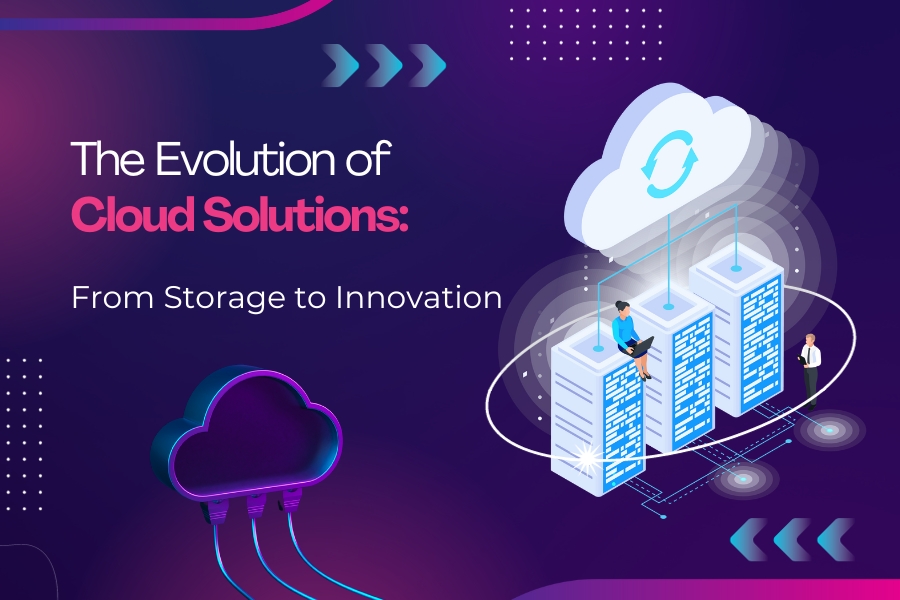
The Evolution of Cloud Solutions: From Storage to Innovation
Since its inception, cloud computing has advanced significantly. From a basic storage solution to an effective instrument for development and expansion. Early cloud services mainly provided computing, networking, and storage capabilities. But as technology improved, so did cloud computing's capabilities. The processing of natural language and quantum computing are included in today's services. This article examines the development of cloud systems. From their early days as a support system for innovation to their present role as a catalyst for digital transformation.
Cloud computing in its early stages between the 1990s and 2000s.
When companies started renting out "virtual" private networks in the 1990s, the idea of cloud computing first emerged. A new "computing paradigm" was coined by Emory University's Professor Ramnath Chellapa in 1997. This was used to describe cloud computing. This description is valid today. Cloud computing is developing in response to advancing economic and technological conditions.
The launch of Amazon's web-based retail services in 2002 was one of the significant turning points. This helped in the development of cloud computing. The issue of only employing a small portion of a computer's capability was originally identified by Amazon. This then created a cloud computing infrastructure model. This helped to utilise its resources more effectively.
Cloud Services' Rise: 2010 and Beyond.
The public now has easier access to cloud services. This results from the establishment of cloud divisions by key corporations. This includes Amazon, Google, Microsoft, and OpenStack in 2010. Organisations and consumers started understanding the advantages of storing data in the cloud. This was a critical turning point in the widespread use of cloud computing.
Organisations began to realise the flexibility and long-term cost advantages. This led to a rise in cloud conversions or migrations. However, transferring current data or applications to the cloud can be difficult and expensive. This has led some seasoned cloud users to assume certain things. They assume that short-term migration expenses outweigh the benefits that IaaS will produce over the long term.
Cloud Computing Services Expansion.
As the cloud computing system gained popularity, various services were added to its capabilities. To assist its Smarter Planet mission, IBM unveiled the IBM SmartCloud platform in 2011. At about the same time, Apple introduced iCloud, a service designed to store personal data and enable seamless device access.
IaaS, PaaS, and SaaS are the three basic types that make up cloud computing services. These models provide various degrees of flexibility and control. They enable organisations to select the best choice for their requirements.
Innovation and Growth in Cloud Computing in the Future.
Technology is never stagnant, and cloud computing is a dynamic field. Cloud computing is anticipated to spur additional innovation. It offers fresh, better solutions for pressing issues as companies and researchers continue to push the boundaries of what is practical.
Increasing storage capacity, enhancing internet performance, prioritising modular software, and integrating Internet of Things (IoT) devices with cloud services are some of the major developments in cloud computing right now. These developments will make it possible to store data seamlessly. It helps access information more quickly and use resources more effectively.
As more businesses adopt cloud technology, cloud service providers could offer more cloud-based data centres at reduced prices. Businesses will profit from the increasing competition. They do so by receiving more economical and dependable cloud services.
To sum up, the development of cloud technologies has changed how we access, use, and store data and applications. Cloud computing has evolved from its early days as a basic storage solution into a potent instrument for growth and innovation. We may anticipate that cloud computing will play a bigger part in determining the direction of companies and innovations.


